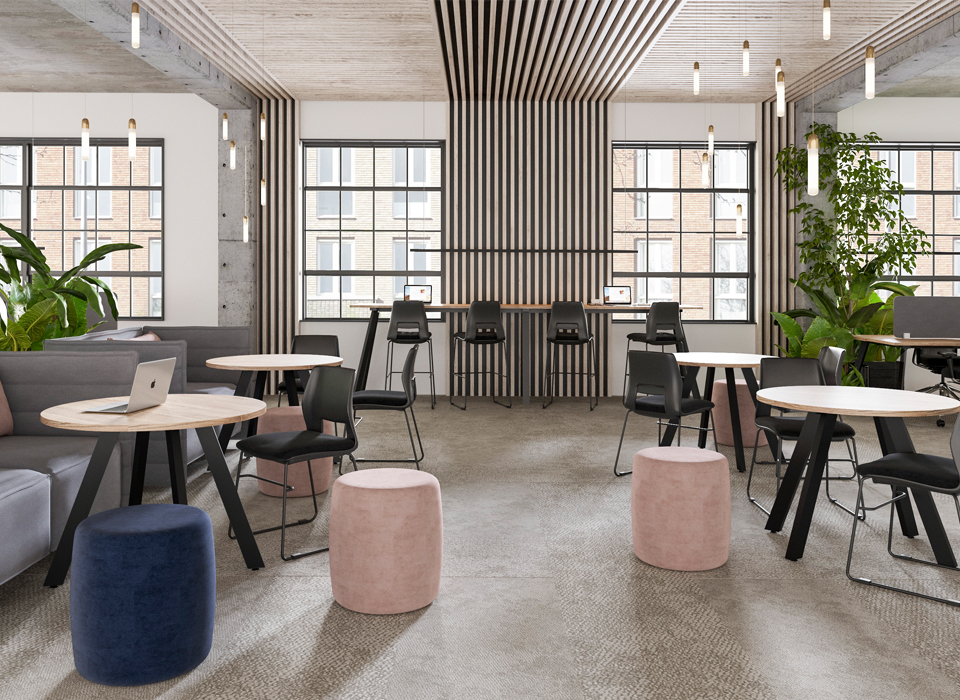
FLEXIBLE WORKSPACES | THE FUTURE IS HERE
Wednesday, 12 February 2020Traditional office spaces can leave a lot to be desired for today’s workforce. Once a wasteland of cubicles, this past decade has brought a shift in the way we use and design our office spaces. There is a undeniable focus on employee well-being and productivity, with a priority to streamline workflow. The new generation workforce calls for a flexible, multi-functional and well-planned office model.
Recently, Australia has seen rapid growth in flexible workspaces, that may see them become the workplaces of the future.
What is a flexible workspace?
A flexible workspace, also known as a shared office or co-working space, is a serviced office space ready to host a variety of users. It has a flexible design that adapts to support the individual in a range of tasks.
These self-sufficient spaces are fitted with basic equipment (phones, internet and appliances) and are fully furnished, available for occupants to lease for a short or extended period of time.
A flexible workspace can support a range of tenants, from a small start-up to a large established company, offering as much space as needed. They allow mobile employees to have a physical office space to work from, encouraging collaboration and providing networking opportunities.
The Australian Co-working Market report 2018-19 shows the top 3 occupiers of flexible workspaces are professional services (22.56%), IT, computing and software (15.38%) and property, real estate and construction (11.16%).

Features of a flexible workspace
Layout
Flexible workspace design needs to be just that; flexible. A good spatial design will have a mixture of private offices and focus rooms, as well as collaborative spaces (e.g. informal meeting and breakout spaces). A multi-functional space supports a flexible schedule, where employees are performing a range of different tasks.
According to the current market report, an overwhelming 80% of occupants sought a private office within a flexible workspace last year.
Furniture
While spatial layout is very important, the furnishings are just as pertinent. Flexible furnishings need to be able to adapt to different users and applications. Sit/stand desks, ergonomic chairs and mobile storage units help to increase flexibility and movement in the workspace.
Connectivity
In the modern workplace, all employees need internet access. As flexible workspaces are already fitted with power and internet, easy access to these services is required too. Clever design features integrated technology (e.g. power outlets and data boxes) to ensure employees can be truly flexible in how they work.

The benefits of a flexible workspace
There are many benefits to leasing a flexible workspace, including:
Reduced costs
Many companies, particularly start-ups, face challenges when it comes to costs. Rent, occupancy and utilities are all restrictions which can affect business. With a flexible workspace, there is minimal set-up time and no overhead costs involved. The space is completely self-sufficient, with tenants only paying for what they need. This is perfect for telecommuting employees or those on a fixed-term project.
Flexible workspaces do not require a long-term contract or commitment, and often have flexible lease terms.
Agility
As space allocation is not fixed like in a traditional office, a flexible workspace is ready for the next user almost immediately. To ensure the space functions efficiently, there will be rules for maintaining it. A flexible workspace will have designated areas for both individual work and collaboration. Employees will also have the ability to re-arrange furniture to create collaborative spaces as needed.
Networking
A flexible workspace can be an environment which hosts a variety of employees, brands or businesses. Sharing a co-working space can be an innovative way to both work and network. A flexible workspace can facilitate interaction between employees who would otherwise have very little communication.
Workplace satisfaction
Studies show that our work environment has a huge impact on how we feel and how productive we are. Flexible workspaces provide users with a functional, modern design that will inspire and allow easy access to all it has to offer. The nature of a flexible workspace allows employees to be mobile, frequently change their surroundings and have a say in where are how they work. This leads to increased engagement and job satisfaction.
Increased productivity
The digital age has made face-to-face interaction scarce in the workplace, particularly for mobile employees. Studies show that this type of interaction is beneficial to job performance.
Flexible workspaces are built for activity-based working and collaboration, encouraging employees to engage with each other in a positive social atmosphere. Designated spaces mean employees are more likely to move around during the day, further encouraging interaction.

The constraints of a flexible workspace
Whilst flexible workspaces are valuable to the modern workforce, they will not be suited to all employees or business types. With an average lease length of 7.5 months across Australia, flexible workspaces are a temporary solution and are not without compromise.
Factors such as location and lack of personalisation can be discouraging for potential leasers. The occupants must find a flexible office location that suits them. The current market report found that 73% of new flexible workspaces were located outside of the CBD, making these spaces more accessible for those in suburban areas.
While flexible workspaces will be modern in design, they are not able to be customised with logos or brand colours.
Another potential problem associated with the flexible workspace is distraction. While collaboration is encouraged in this environment, an engaging community atmosphere may prove too much for some occupants.
In terms of privacy, a flexible office space would prove unpopular for those concerned with data protection. If leasing a flexible workspace with other tenants, a shared network would weaken information security.
While flexible workspaces are not suited to everyone, it is good to weigh the pros and cons before committing to a new way of working.
With the co-working industry continuing to grow, flexible workspaces are fast changing the way we work. Workspace habits and trends will see operators continue to evolve the flexible workspace model, making them bigger, better and more accessible for everyone.
